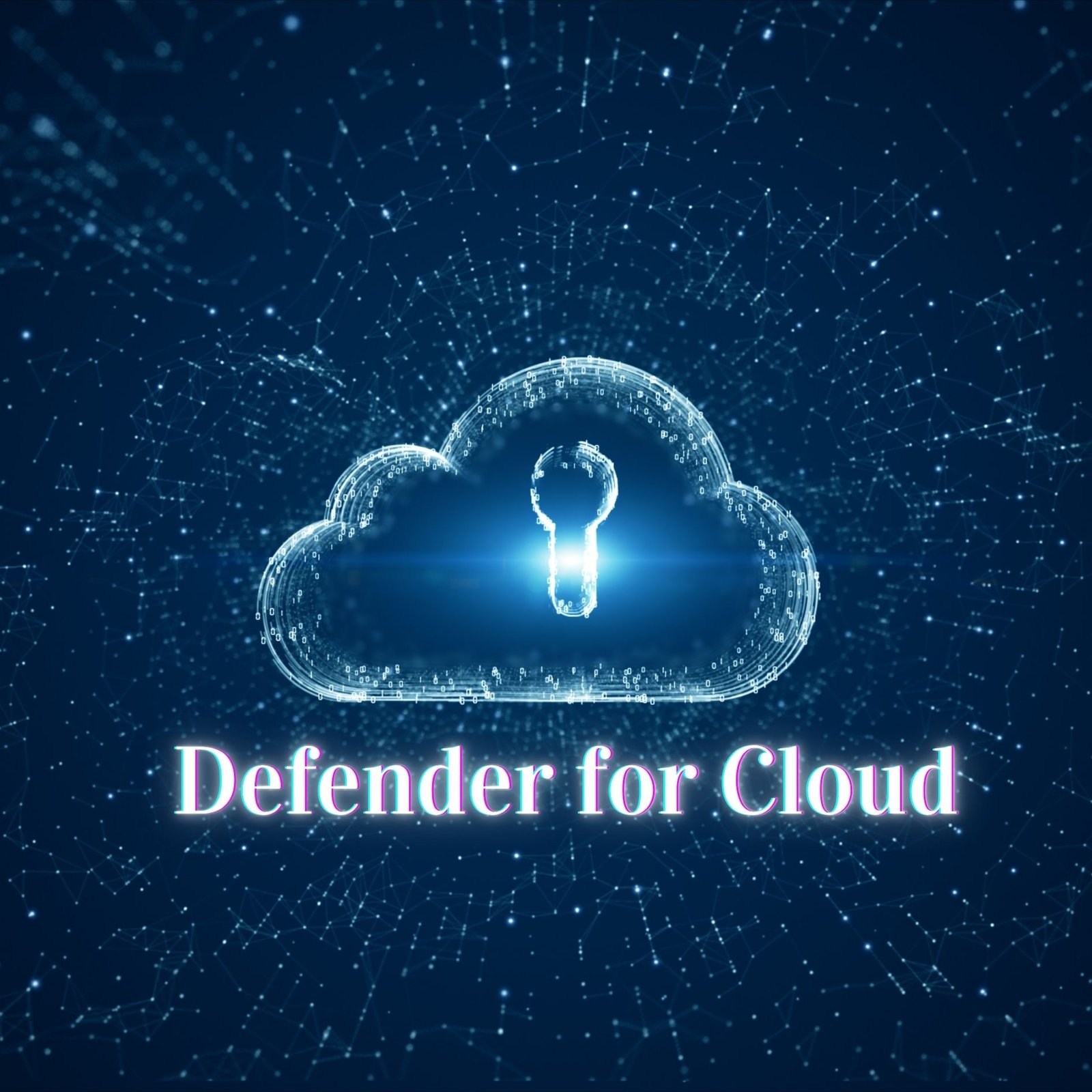Table of Contents
In today’s increasingly digital world, organizations are migrating more of their workloads, applications, and data to the cloud. While this transformation offers scalability and agility, it also brings new security challenges. Protecting cloud environments requires more than traditional security tools. That’s where Microsoft Defender for Cloud steps in as a comprehensive, intelligent cloud security solution.
This blog explores what Defender for Cloud is and how it works, providing a detailed look at its features, pricing, and integration with Defender for Cloud Apps to create a unified security ecosystem.
Understanding Microsoft Defender for Cloud
Microsoft Defender for Cloud is a Cloud-Native Application Protection Platform (CNAPP) developed to provide end-to-end security management and threat protection across Azure, Amazon Web Services (AWS), Google Cloud Platform (GCP), and hybrid environments.
Its primary goal is to help organizations:
- Strengthen their security posture
- Detect and respond to emerging threats
- Ensure compliance with security standards
By delivering real-time insights, intelligent threat detection, and proactive recommendations, Defender for Cloud plays a crucial role in securing cloud-native and hybrid systems.
Key Capabilities
Microsoft Defender for Cloud offers a wide range of features that support the entire security lifecycle—from continuous assessment to advanced threat mitigation. Here are some of its most significant capabilities:
1. Security Posture Management
Defender for Cloud evaluates the security of cloud environments continuously and assigns a Secure Score. This score reflects the overall health of the cloud infrastructure based on security best practices and industry benchmarks such as CIS, NIST, and ISO 27001.
The platform also provides actionable guidance to improve security configurations and reduce vulnerabilities.
2. Threat Protection
Built-in analytics, threat intelligence, and machine learning algorithms allow Defender for Cloud to detect and alert teams about suspicious activities. This includes unusual network behavior, privilege escalation, and potential data exfiltration.
3. Multi-Cloud Support
Although Microsoft Defender for Cloud is deeply integrated with Azure, it also extends its capabilities to AWS and GCP, ensuring a consistent security management experience across different cloud platforms.
4. Container and Kubernetes Security
Defender for Cloud provides advanced security for containerized environments. It assesses vulnerabilities, enforces compliance, and offers runtime protection for Kubernetes workloads across Azure Kubernetes Service (AKS), Amazon EKS, and Google Kubernetes Engine (GKE).
5. Integration with Defender
When paired with Microsoft Defender for Cloud Apps, the platform offers visibility and control over Software-as-a-Service (SaaS) applications. This combination helps organizations monitor app usage, detect data leaks, and manage risky user behavior.

How Does Microsoft Defender for Cloud Work?
To fully understand what Defender for Cloud is and how it works, it is helpful to break down the key processes that drive the platform:
Step 1: Onboarding
Organizations begin by onboarding their cloud environments to Defender for Cloud. This includes granting permissions, connecting subscriptions, and enabling relevant security policies for services across Azure, AWS, and GCP.
Step 2: Continuous Assessment
Once active, the platform scans cloud resources to identify vulnerabilities, misconfigurations, and non-compliance. It assesses network settings, access controls, encryption practices, and more. These findings are summarized in the Secure Score dashboard, enabling teams to track and improve their security status.
Step 3: Threat Detection and Alerts
Defender for Cloud uses machine learning, behavior analytics, and Microsoft’s threat intelligence to identify threats in real-time. Whether it’s a brute-force attack, malware activity, or anomalous user behavior, the system issues alerts to notify security teams immediately.
Step 4: Remediation and Response
The platform offers actionable security recommendations along with automated remediation options. For example, it can auto-deploy patches, disable risky configurations, or initiate alerts to incident response teams. Organizations can also use Azure Logic Apps or Microsoft Sentinel to build custom workflows.
Step 5: SaaS and App Protection via Defender for Cloud Apps
Microsoft Defender for Cloud integrates seamlessly with Defender for Cloud Apps, which extends security visibility to cloud-hosted applications such as Microsoft 365, Dropbox, Salesforce, and others. This integration strengthens the organization’s ability to monitor data flow, control access, and mitigate insider threats.
Defender for Cloud vs. Defender for Cloud Apps
While the names are similar, Microsoft Defender for Cloud and Microsoft Defender for Cloud Apps serve different purposes. Here’s a comparison:
| Feature | Defender for Cloud | Defender for Cloud Apps |
| Primary Use | Infrastructure and workload protection | SaaS application visibility and data security |
| Environment Coverage | Azure, AWS, GCP, on-premises | Microsoft 365, Dropbox, Salesforce, and others |
| Key Focus | Threat protection and posture management | Shadow IT discovery and data protection |
| Integration | Azure-native tools, Microsoft Sentinel | Conditional Access, Microsoft Entra, DLP tools |
| Typical Users | Cloud architects, security admins | IT admins, compliance officers, security teams |
Defender for Cloud Pricing Overview
A critical aspect of adoption is understanding Defender for Cloud pricing and how it aligns with organizational needs.
Free Tier
Defender for Cloud offers a free tier that includes:
- Secure Score
- Continuous posture assessments
- Basic recommendations for Azure resources
This tier is enabled by default for all Azure subscriptions and helps get started with cloud security management.
Paid Defender Plans
Microsoft offers several Defender plans, each tailored for specific workloads and environments. These are charged per resource per month. Examples include:
- Defender for Servers – Approximately $15 per server per month (Plan 2)
- Defender for Containers – Based on the number of vCores or Kubernetes nodes
- Defender for SQL – Per database or instance
Each plan provides targeted threat protection and advanced capabilities. Organizations can mix and match plans to suit their specific infrastructure and security needs.
To estimate costs, it is recommended to use the official Azure pricing calculator or consult with a Microsoft partner.
Why Organizations Choose Microsoft Defender for Cloud
There are several reasons why enterprises and small businesses are adopting Microsoft Defender for Cloud:
Unified Visibility and Management
It enables organizations to manage security across all major cloud providers and hybrid environments from a single dashboard.
Intelligent Threat Detection
With its integration of Microsoft Threat Intelligence, Defender for Cloud can identify threats early and with a high degree of accuracy.
Regulatory Compliance
The platform helps organizations meet regulatory and industry-specific compliance requirements through policy management and built-in assessment frameworks.
Integration Across the Microsoft Ecosystem
Defender for Cloud works seamlessly with Microsoft Sentinel, Microsoft Defender for Cloud Apps, Microsoft Entra ID, and other tools, creating a well-connected security infrastructure.
Best Practices for Using Defender for Cloud
To get the best results from Defender for Cloud, consider the following best practices:
- Enable all relevant Defender plans for your environment.
- Review your Secure Score regularly and implement suggested improvements.
- Automate responses and remediation using Logic Apps or workflows.
- Integrate with Defender for Cloud Apps for added visibility into user behavior and app usage.
- Monitor alerts consistently and use Microsoft Sentinel for advanced threat hunting and analytics.
- Continuously update policies based on your organization’s compliance and security goals.
Conclusion
Understanding what Defender for Cloud is and how it works is essential for any organization operating in the cloud. As cyber threats continue to evolve, having a proactive and intelligent defense system is crucial. Microsoft Defender for Cloud, along with Defender for Cloud Apps, provides comprehensive protection across infrastructure, applications, and user activities.
Whether your organization is beginning its cloud journey or looking to enhance an existing security strategy, Microsoft Defender for Cloud offers the tools and insights needed to build a resilient, secure environment.









